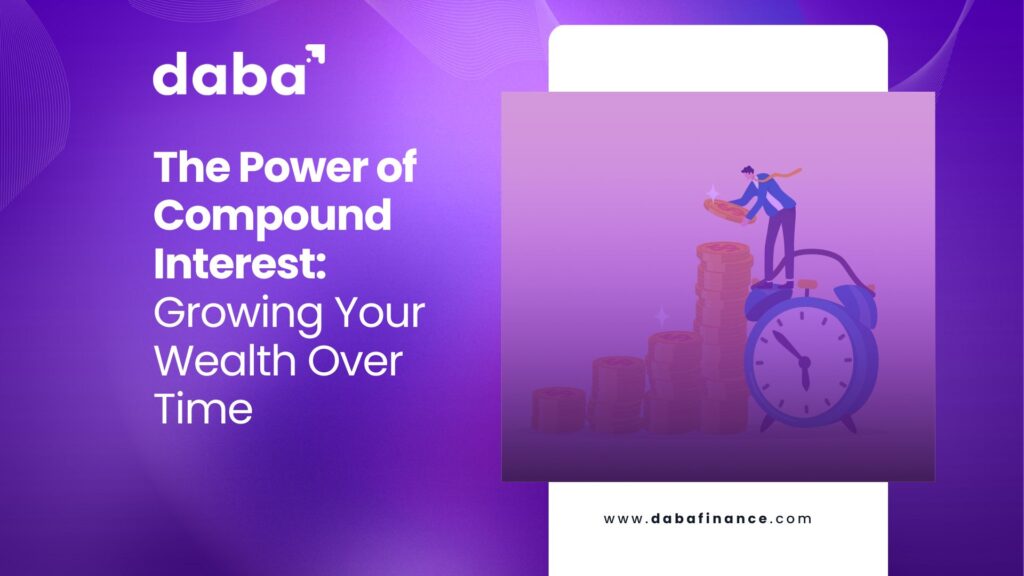Pendant longtemps, l’investissement en bourse était perçu comme un privilège réservé à une élite fortunée. Mais les temps ont changé. Grâce aux plateformes modernes comme Daba, il est désormais possible d’investir dès 10 000 FCFA, soit environ 15 euros. Ce n’est donc plus une question de fortune, mais d’information et de stratégie.
Dans cet article, nous allons déconstruire les idées reçues sur le budget nécessaire pour investir, vous expliquer comment débuter avec peu, et surtout, pourquoi commencer petit est souvent la meilleure décision pour bâtir un patrimoine solide, en particulier en Afrique.
Pas besoin d’un million pour devenir investisseur
Vous vous demandez « Quelle est la somme minimale pour investir en bourse ? » La réponse est simple : le prix d’une action. Et cela peut être très accessible. Sur la BRVM (Bourse Régionale des Valeurs Mobilières), par exemple, certaines actions se négocient à moins de 1 000 FCFA.
Mais investir ne se résume pas à acheter une action isolée. Il s’agit de construire un portefeuille diversifié, d’apprendre à gérer le risque, et de viser la croissance sur le long terme. C’est là que l’éducation financière et les bons outils font toute la différence.
Les freins psychologiques : plus puissants que les freins financiers
Les études montrent que le vrai blocage n’est pas le montant à investir, mais la peur : peur de perdre, de ne pas comprendre, de faire une erreur. Beaucoup pensent qu’il faut 1 million pour commencer sérieusement. En réalité, ce qu’il faut surtout, c’est un bon accompagnement.
C’est exactement pour cela que Daba a lancé l’Académie du Patrimoine – une plateforme éducative 100 % en ligne, avec des modules simples, progressifs et accessibles à tous. Vous y apprenez les bases de la bourse, comment investir sur la BRVM, comment choisir vos actions, et surtout, comment bâtir un patrimoine financier étape par étape.
Investir petit… mais stratégiquement
Vous avez 10 000 FCFA ? Vous pouvez commencer. Vous avez 50 000 FCFA ? Vous pouvez diversifier. L’important n’est pas de tout investir d’un coup, mais d’investir régulièrement. C’est ce qu’on appelle la stratégie d’investissement progressif, ou DCA (Dollar Cost Averaging). Elle vous permet de lisser le risque en investissant la même somme chaque mois, peu importe les conditions de marché.
Avec l’application Daba, vous pouvez faire exactement cela : commencer petit, et investir en toute simplicité sur les entreprises cotées en Afrique. Tout est centralisé : ouverture de compte gratuite, choix d’actions, portefeuille en temps réel, suivi de performance, et même des recommandations via Daba Pro.
Diversification et gestion du risque : même avec un petit budget
La clé pour réussir en bourse n’est pas d’investir beaucoup, mais d’investir intelligemment. Cela passe par :
- La diversification : investir dans plusieurs entreprises ou secteurs pour limiter les pertes si l’un d’eux chute.
- L’analyse fondamentale : comprendre ce que vaut une entreprise avant d’y placer votre argent.
- Le long terme : éviter les allers-retours spéculatifs (le “trading”) et viser la croissance durable.
Avec un budget entre 10 000 FCFA et 100 000 FCFA, vous pouvez déjà vous exposer à des indices sectoriels ou des collections d’actions sélectionnées directement depuis l’appli Daba.
Attention aux frais… et aux promesses trop belles
Certaines plateformes ou courtiers imposent des frais de courtage élevés, rendant les petits investissements peu rentables. Avec Daba, les frais sont réduits au minimum, et les abonnés Daba Pro bénéficient même de réductions allant jusqu’à 50 % sur les frais de transaction.
Autre piège : les promesses de rendements “garantis”. En bourse, le rendement est toujours lié à un risque. L’important est donc de comprendre ce risque, de le maîtriser et de savoir pourquoi vous investissez.
C’est là que L’Académie du Patrimoine joue encore un rôle crucial. Les modules vous aident à définir vos objectifs, à comprendre votre profil d’investisseur, et à bâtir une stratégie adaptée, même si vous commencez avec peu.
L’Afrique, un terrain fertile pour les petits investisseurs
La BRVM, les marchés d’Afrique anglophone, les IPO récentes comme Orange CI ou BICB, ou encore les dividendes généreux de sociétés comme BOA Burkina… Tous ces exemples montrent que l’Afrique regorge d’opportunités. Et contrairement aux idées reçues, ces opportunités sont souvent moins volatiles que certains marchés occidentaux.
Avec Daba, vous avez accès à ces actifs en un clic. Et si vous ne savez pas par où commencer, vous pouvez même choisir un portefeuille géré automatiquement selon votre profil via les fonds gérés de la plateforme.
En conclusion : quelle somme pour investir en bourse ?
Voici une réponse simple, claire et vraie : à partir de 10 000 FCFA, vous pouvez déjà poser votre premier pas sur les marchés financiers. Mais plus que la somme, ce sont les outils, la méthode et la discipline qui feront la différence.
Et c’est exactement ce que propose Daba :
- Investissez dès 10 000 FCFA avec notre application intuitive.
- Apprenez gratuitement avec notre Académie du Patrimoine.
- Recevez des conseils personnalisés avec Daba Pro.
- Diversifiez avec des actions africaines, des obligations, ou des portefeuilles gérés.
Prêt à faire le premier pas ?
📲 Téléchargez l’application Daba Finance dès aujourd’hui
🎓 Inscrivez-vous à l’Académie du Patrimoine sur dabaacademy.com
🌍 Et commencez à bâtir votre avenir financier, un pas après l’autre.

